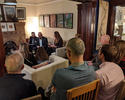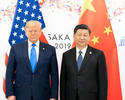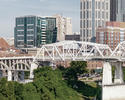More than three decades before Greta Thunberg was born — the Swedish environmental activist on climate change — more than 20 million Americans participated in the first Earth Day on April 22, 1970. read more »
Greta preaches many of the first Earth Day's failed predictions
- Login to post comments
Coronavirus Regional Economic Impacts and Policy Responses
Most regions were beginning to see an acceleration in economic growth during January and February 2020. The 20-state Heartland was poised to see a notable improvement in economic performance that will now be tested due to public health measures implemented to contain the spread of the coronavirus. The additional $200 billion in purchases of grain, industrial supplies and manufactured products over the next two years that China agreed to in the Phase I trade deal will benefit the Heartland greater than any other region of the nation. read more »
- Login to post comments
Coronavirus and the future of living and working in America
By late spring, the most severe impacts from the coronavirus may be fading, but its impact on how we live and work will not go away. Indeed, many of the most relevant trends — including the rise of dispersed work and living arrangements — were already emerging even before the pandemic emerged. read more »
Grass Roots
A couple of weeks ago I was visiting friends and the conversation turned to the ever more visible dilemmas in the neighborhood. We focused on two specific problems: the continuing expansion of the homeless population, and the record number of vacant storefronts. read more »
- Login to post comments
The Wondrous, Magnificent Cities of the 21st Century
The American Conservative recently laid an egg. They published a misanthropic, pessimistically aggressive Malthusian screed, written by James Howard Kunstler. read more »
- Login to post comments
We Were Warned Not to Bunch Up
We were warned. After September 11, 2001, historian Stephen Ambrose told us what to do. read more »
Class and the Challenge of COVID-19
COVID-19, the coronavirus that is spreading across the world, is wreaking havoc on working people and their families. Weeks after it burst onto the world scene, the end of this deadly threat is still not in sight. Although it is clear that its death toll will not begin to approximate that of the lethal 1918-19 worldwide Spanish Influenza epidemic, early indications are that COVID-19 could end up inflicting even more economic and political damage than that earlier pandemic. Its read more »
- Login to post comments
Can COVID-19 Help Us Overcome Our Polarization?
Without question, the COVID-19 pandemic is disrupting our family and social lives, our markets, our health care systems, and the very way societies function. Regrettably, the death toll will climb and the costs of the economic fallout of this coronavirus will be severe and truly life-changing for almost everyone around the globe. read more »
- Login to post comments
Outbreak a Wake-up Call About Need to Decouple from China
For the past half century, China has gone from successfully exploiting global markets to seeking to impose its own authoritarian system on the rest of the world. This winter is all about much of the rest of the world saying, “No thanks.” read more »
- Login to post comments
Millennials Find New Hope in the Heartland
In “Millennials Find New Hope In The Heartland,” Heartland Forward Senior Fellow Joel Kotkin and his contributors address a fundamental topic for future economic success in the Heartland: Will Millennials return and remain at higher rates? read more »
- Login to post comments






















